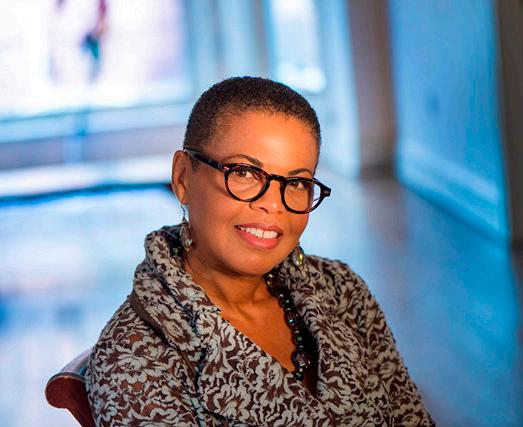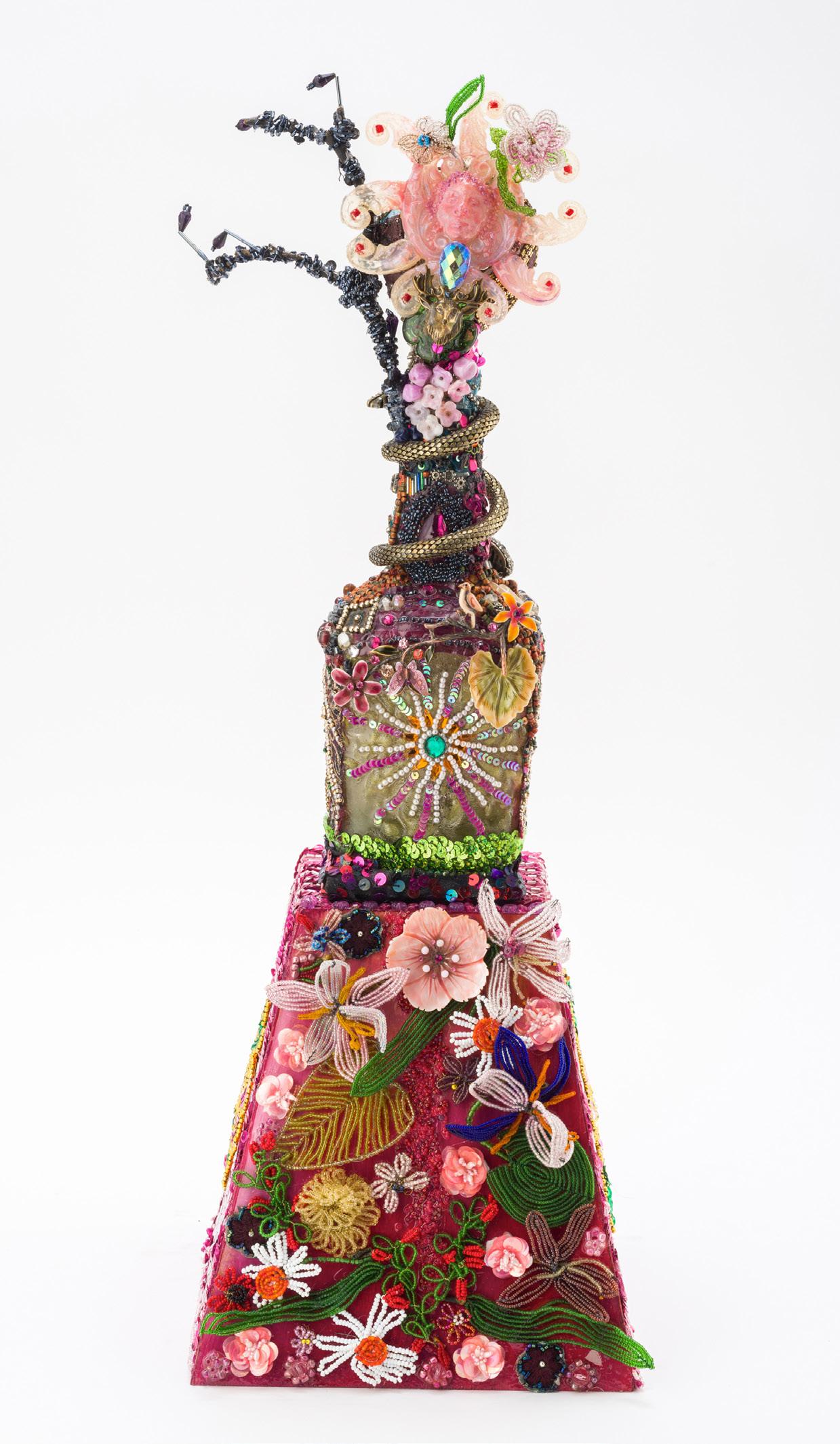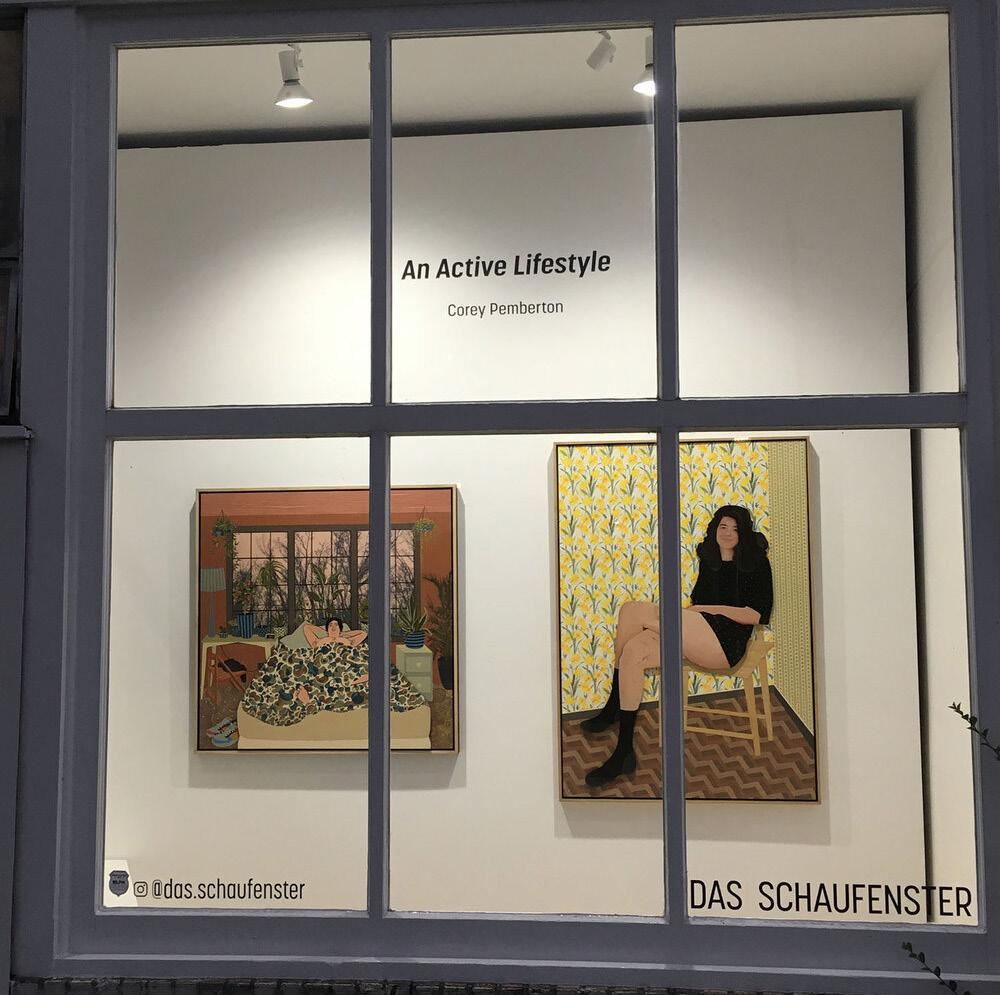
8 minute read
Radical Beauty Part Two: Community Comes First
by Jennifer Hand
Foreword: In the midst of this global time of upheaval, cultural shifts engendered both by COVID and the latest wave of the Black Lives Matter movement have the potential to reshape the current gallery structure, leaving in its stead a more equitable system of representation. This series examines ways that visionary gallerists are shifting the paradigm towards allyship and relevance, and how socially conscious galleries with a history of representing controversial artists have found success.
In part one of this series, we focused on the incomparable Joyce Scott and her long history of working with galleries which champion challenging work. Scott’s hometown of Baltimore has a thriving community of artists and curators who are working to break barriers and expand audiences. Myrtis Bedolla of Baltimore’s Galerie Myrtis is one such leader who has been advocating for artists and the arts for over thirty years. Bedolla specializes in representing African American artists, and believes that the strength of any gallery lies chiefly with the artists represented, along with the relationships of trust built between the artist and curator. Bedolla promotes her artists beyond the gallery walls at art fairs worldwide and on a robust social media platform.
Myrtis differentiates itself from the gallery status quo by understanding that even the most ravishing exhibition fails if it doesn’t find an audience. Bedolla’s experience working in and visiting galleries in major metropolitan cities made her hyperaware of their barriers to entry and imparted a sense of responsibility to remove those obstacles in her own space. “New York was the most egregious,” she notes – describing having staff actively avoid eye contact as she perused the walls.
Speaking to a former intern now working in New York, Bedolla realized that this is due to staff being trained not to acknowledge or look at visitors.
“The importance of art and its ability to touch and to heal is something that belongs to us all.” – Myrtis Belloda. Belloda has been building relationships with artists for over 30 years. Photo Credit: Mitro Hood.
At Galerie Myrtis, Bedolla rejects that blatant gatekeeping and explicitly trains her staff to welcome every guest with equal warmth and enthusiasm, from their collectors to an unhoused visitor coming in for a moment of artistic communion. All of the programming Bedolla offers is open to the public, and includes gallery talks, artist lectures and panels. Nearly all programs are free, with the few paid programs intentionally accessibly priced.
“Everyone is welcome here, and we go out of our way to make sure that people know that. Whether they’re looking to buy or just coming in out of curiosity, or would never be able to buy – we see the gallery as part of the art ecosystem in the city, and part of its cultural capital.”
Oletha DeVane, a Maryland-based multidisciplinary artist whose works feature sumptuous encrustations of glass beadwork, echoes Bedolla’s sense of often having felt unwelcome in gallery spaces, even ones in which her work was being shown. DeVane has been a visiting artist at Galerie Myrtis several times, most recently in 2020’s “Women Heal Through Rite and Ritual,” where her work glistened in the light of Renee Stout’s stunning neon installation. DeVane characterizes Bedolla as both “down-to-earth homegirl” and sophisticated advocate, and notes that there few other galleries with whom she entrusts her work. “There are so few black-owned galleries,” DeVane points out, “We have to do the work to support them like they’ve supported us.” DeVane’s background is as a painter, coming to glass via a fascination with a Voodoo glass bottle brought back by a friend from Haiti. Since falling in love with the medium, she’s made many trips to drink deep of Haiti’s aesthetic and symbolismrich mythology. She uses glass’s sparkle and translucence to reference ideas of transcendence and imbue a “quality of awe” that other materials lack.

Oletha DeVane, Spring. Glass, wood, metal, beads, sequins, fabric. 2018. DeVane’s work explores issues of sociopolitical identities with a combination of mixed media assemblage, painting and sculpture. Her work is in the permanent collection of several museums and has been exhibited around the world. Photo credit: Mitro Hood.
DeVane has repeatedly chosen to work with Bedolla because of the energy Galerie Myrtis expends in outreach and community activism. She notes that many other galleries aren’t willing to invest the time and resources to truly understand their artists or their audiences, leading to narratives filled with insincerity and bluster. Bedolla agrees, concluding that curators fail when they aim to overshadow the artist’s voice with grandiose curatorial statements. Instead, curators should focus on listening and researching the artist’s background to provide straightforward and accessible interpretation.
The COVID lockdowns moved most of Galerie Myrtis’ programs online for 2020, which provided challenge in equal measure with opportunity. The sense of conviviality felt in a shared space is lost, but the ability to join in an artist lecture from one’s living room offered the opportunity to a wider audience than previous. Bedolla was also early among curators in recognizing the transformational power of social media in the art world, and has hired staff who specialize in using digital platforms to further the reach of her exhibitions and programs, which was especially crucial during the pandemic.
COVID was similarly an accelerant in the formation of Das Shaufenster, a Seattle gallery founded by German-born, Washington-based Anna Mlasowsky. Das Schaufenster arose from a combination of pessismism and proximity. Early on in the pandemic, when many assumed we would be back to our normal lives within weeks, Mlasowsky braced herself for a protracted ordeal. With the rare luxury of extra time on her hands due to canceled opportunities and exhibitions, Mlasowsky reached out to her landlord to see about leasing the boarded-up storefront space downstairs from her apartment.
The format of Das Schaufenster alone dispenses entirely with multiple barriers to entry, in that the works on display can be viewed directly from the street with no need to step inside to experience the art on offer. This 24/7 viewable nature has the additional benefit of not requiring Mlasowsky to staff the gallery, which would have been an insurmountable cost to getting the project off the ground.
When asked what drove her to use her COVID pause time to start a gallery, Mlasowsky lists a multitude of reasons. Representation has been slow to materialize for her, which she attributes both to the opaque elitism of the gallery system and her status as an immigrant outsider in the United States, without the connections that make or break an art career. “In art, most of your career is based on who you know and who’s recommending you,” she notes – leading to a long-held desire to be able to provide opportunities for other marginalized artists. Visiting galleries in several American cities, she too noticed a universal feeling of unwelcome in those spaces. More urgently, many in her immigrant artist network were in true crisis when the pandemic began. With no work to justify their visas and no way of getting back to their home countries, they were doubly stranded. Das Schaufenster acted quickly to offer exhibition opportunities and cross-post information to help navigate thorny visa extension issues.
With that accomplished, Mlasowsky next turned towards artists with a community-minded practice, many of whom were working overtime to address the double needs of pandemic and protest. This opportunity for activist artists to recharge and focus on their own creativity has resulted in exhibitions from Corey Pemberton, Shiva Aliabadi and Connor Walden. Other months offered MFA students with canceled thesis exhibitions a chance to show their work. Now, a 2021 exhibition schedule curated by Anna Parisi and Tiffany Danielle Elliot showcases LatinX artists who are reclaiming voices of dissent and decolonization.
In Mlasowsky’s wealthy Seattle neighborhood, “most of our neighbors are tech executives – and they don’t tend to go to art openings, so I felt the need to bring the art to them. I don’t love that they are being catered to, but at least they’re seeing the work.” Mlasowsky intentionally breaches their walls of privilege with artistic confrontation, exposing audiences to police shootings in Brazilian Favelas, nonconsensual medical trials and the uncomfortable truth that our wealth is often dependent on the misery of others.
As impressive as it is, Das Schaufenster is far from Mlasowsky’s only project during this interval. Das Fernglas is an inbox based gallery that Mlasowsky began in 2021 which delivers curated content from glass-centric artists directly to the homes of patrons and fans. Each “exhibition” is a piece of digital content designed by the participating visiting artist to delight and inform. Recent months have featured Liesl Schubel and Jens Pfeifer, with visiting artists from around the world scheduled to participate on a bi-monthly basis through 2022. This project was one that Mlasowsky had been wanting to start for years, and only thanks to the pandemic shut down did she finally have the time to see it to reality.
Whether art manifests as a pinging notification on your screen, or with a friendly face at a gallery welcoming you to enter and explore, 2020’s radical changes have forced adaptation on the art world, ready or not. Gatekeeping no longer goes unquestioned in the age of call-out culture, and the institutions that are doing the work to support marginalized artists – minus the empty virtue signaling, thank you – are being slowly noticed and rewarded for their sincerity with the most valuable resource around – the artists’ trust. In the months and years to come, established community-building galleries and innovative approaches to representation can learn from each other as we brush off the pandemic dust and get back to work.
ENDCAP: Support Das Schaufenster by following the gallery on Instagram @das.schaufenster, and register for the Das Fernglas newsletter at www.annamlasowsky.com/signup. Mlasowsky is taking donations via Venmo @Anna-Mlasowsky to support Das Schaufenster’s ongoing exhibition activism.

Galerie Myrtis is on Instagram @ galeriemyrtis and online at galeriemyrtis. net. The next exhibition, Tawny Chatmon, If I’m no longer here, I wanted you to Know… runs through July 10th.
See more of Oletha DeVane’s work at olethadevane.com or @devanekojzar or at her upcoming solo show at the University of Maryland.
Jennifer Hand is a Norfolk, Virginia based artist, mother, writer, curator and veteran. She serves on the boards of 757 Creative Reuse Center and the Lil Truck of Tools and is the co-founder of the 757 Street Art Battle. Find her on Instagram @xojenniferalexis

